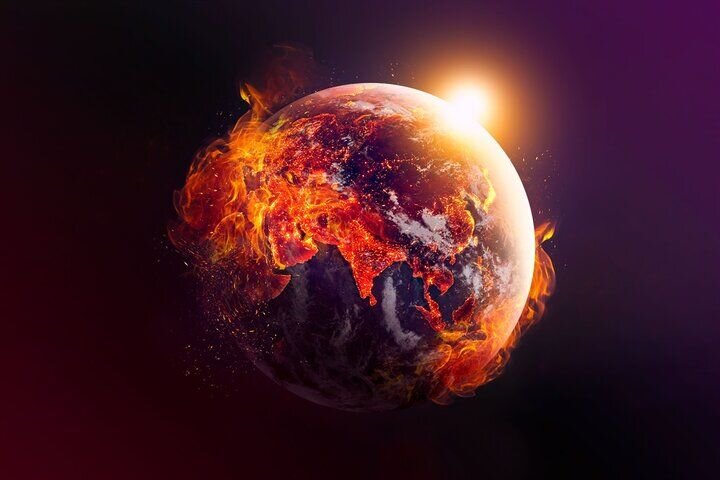Preservation of ozone layer promotes human health, mitigates climate change

TEHRAN – The phase-out of controlled uses of ozone-depleting substances and the related reductions have helped protect the ozone layer for this and future generations.
Consequently, the protection of the layer has contributed significantly to global efforts to address climate change and has protected human health and ecosystems by limiting harmful ultraviolet radiation from reaching the Earth.
In 1994, the United Nations General Assembly proclaimed 16 September the International Day for the Preservation of the Ozone Layer, commemorating the date of the signing, in 1987, of the Montreal Protocol on Substances that Deplete the Ozone Layer.
The ozone layer is a part of the atmosphere that has high concentrations of ozone (a gas made of three oxygen atoms O3), compared to oxygen molecules that exist in nature as a pair of oxygen atoms.
It exists 10km to 40km above the surface of the earth in a region called the stratosphere and contains 90 percent of all the ozone in the atmosphere.
Some harmful gasses including HCFC and Chlorofluorocarbons (CFCs) can interfere with the formation of ozone; mostly causing gaps or holes in the layer, as well as passing UV radiation from the sun to the atmosphere.
CFCs are referred to compounds of carbon, hydrogen, chlorine, and fluorine typically gases used in refrigerants and aerosol propellants. They are harmful to the ozone layer in the earth's atmosphere owing to the release of chlorine atoms on exposure to ultraviolet radiation.
HCFCs are also man-made compounds containing hydrogen, chlorine, fluorine, and carbon and do not occur naturally anywhere. These compounds are used in refrigeration, aerosol propellants, foam manufacture, and air conditioning.
HCFCs are less dangerous causing a smaller risk to the ozone layer; while being very powerful greenhouse gases, which are nearly 2,000 times more potent than carbon dioxide in adding to global warming.
The scientific confirmation of the depletion of the ozone layer prompted the international community to establish a mechanism for cooperation to take action to protect the ozone layer.
This was formalized in the Vienna Convention for the Protection of the Ozone Layer, which was adopted and signed by 28 countries, on 22 March 1985.
In September 1987, this led to the drafting of The Montreal Protocol on Substances that Deplete the Ozone Layer.
The theme for the celebration this year is "Montreal Protocol: Advancing Climate Actions".
This year, the event not only celebrates the achievements to date but also looks to the future for deeper and faster action under the Montreal Protocol.
Deeper and faster for the ozone layer but above all, for people, for climate, and for the planet.
The principal aim of the Montreal Protocol is to protect the ozone layer by taking measures to control total global production and consumption of substances that deplete it, with the ultimate objective of their elimination on the basis of developments in scientific knowledge and technological information.
It is structured around several groups of ozone-depleting substances. The groups of chemicals are classified according to the chemical family and are listed in annexes to the Montreal Protocol text.
The Protocol requires the control of nearly 100 chemicals, in several categories. For each group or annex of chemicals, the Treaty sets out a timetable for the phase-out of production and consumption of those substances, with the aim of eventually eliminating them completely.
The timetable set by the Protocol applies to the consumption of ozone-depleting substances. Consumption is defined as the quantities produced plus imported, less those quantities exported in any given year.
There is also a deduction for verified destruction. Percentage reductions relate to the designated baseline year for the substance. The Protocol does not forbid the use of existing or recycled controlled substances beyond the phase-out dates.
How Iran confronted chemicals jeopardizing the ozone layer?
Iran also joined the international cooperation protecting the fragile layer of ozone in 1989 and contributed significantly to global efforts in order to address climate change while protecting human health and ecosystems.
In 1992, the Department of Environment in collaboration with the United Nations Development Program approved a plan to establish an ozone layer conservation office in the Montreal Protocol executive committee; and the office started working a year later.
Maryam Hasani, an official with the ozone layer conservation office, told IRNA that the activities of the ozone conservation office are summarized in the five fields of changing the production process, controlling and monitoring, raising public awareness, and regional and international cooperation.
“Through the first phase of the plan, we succeeded in omitting 9,800 tons of ozone-destroying gasses changing the manufacturing processes of 1,378 factories, and it is scheduled to eradicate some 2,000 tons through the second phase,” she explained.
Holding various workshops, enforcing a set of laws and regulations, and strengthening supervision in the manufacturing units are also part of the project’s second phase, which will be achieved by the 2030s, she added.
Until 2013, Iran was able to keep the consumption of hydrofluorocarbons at the base level (5.380 ODP tons) and by 2018 reduce this base level by 30 percent.
MT/MG
Leave a Comment